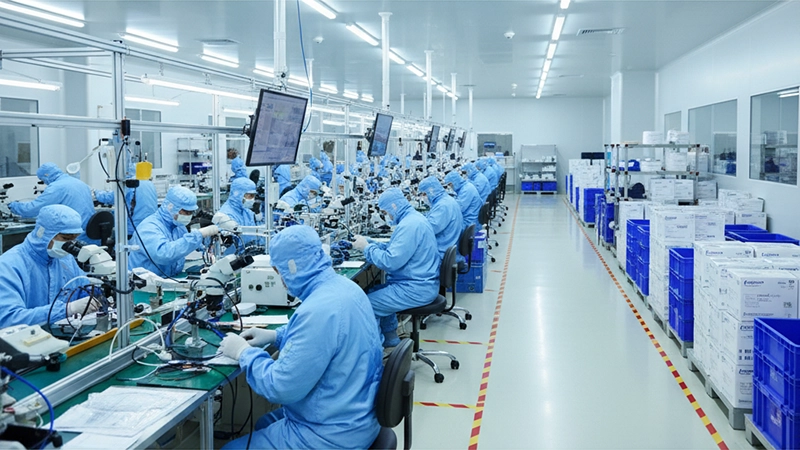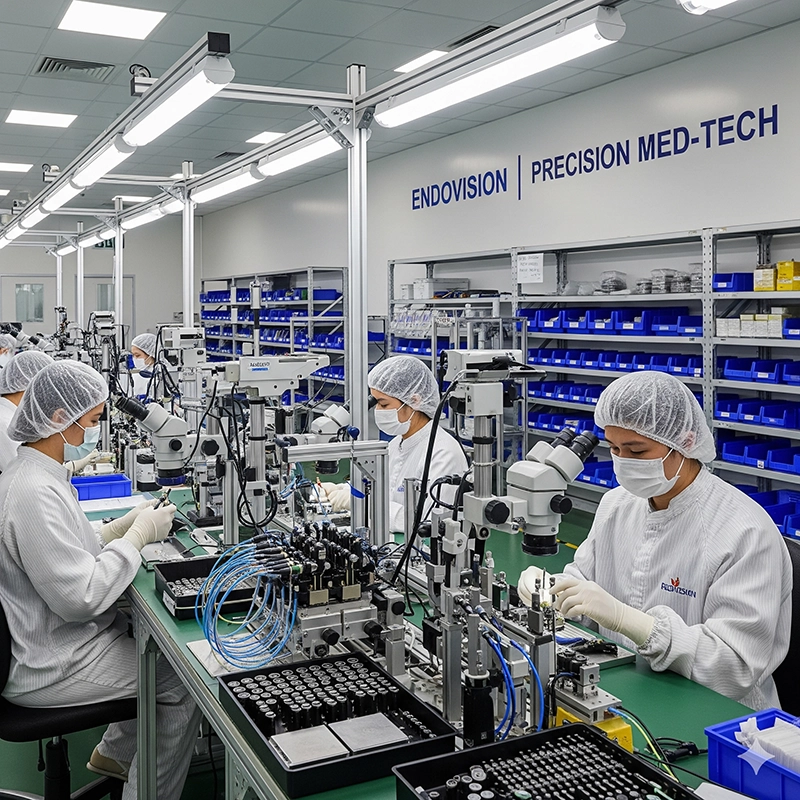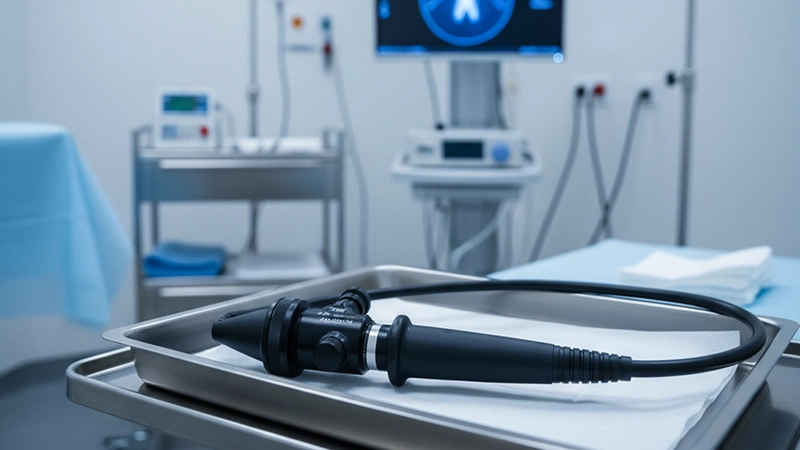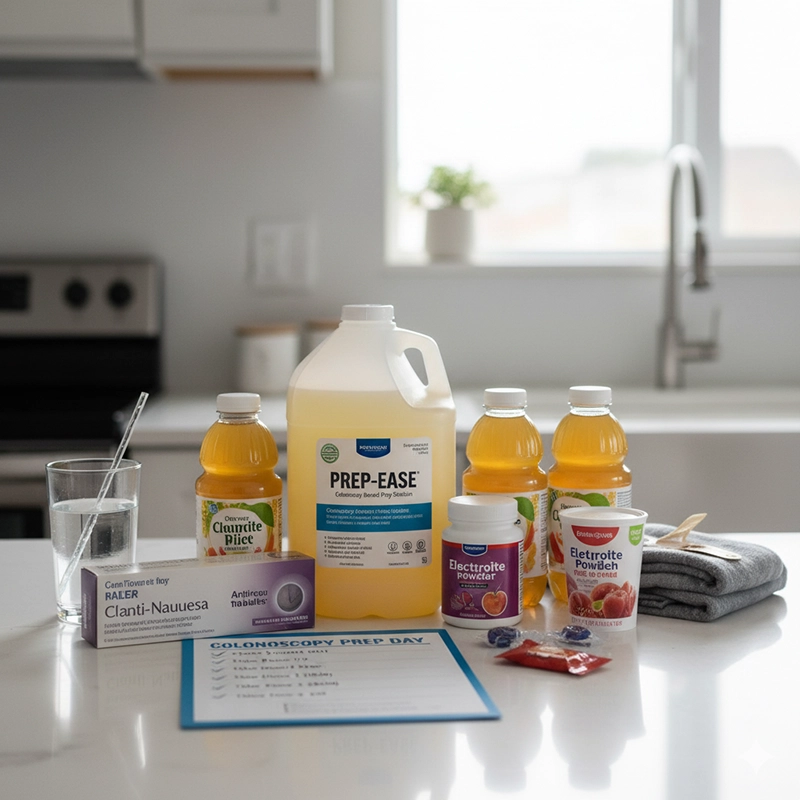Table of Contents
An XBX colonoscope factory is defined by medical-grade materials, ISO 13485 and risk-managed production, 100% optical and electrical calibration, and lot-level traceability; image sensors, bending sections, and biopsy channels are manufactured under SPC-controlled lines, so consistent diagnostic imaging and long service life are delivered while repair and ownership costs are reduced for hospitals.
At the XBX colonoscope factory, precision has been embedded into every step. A closed-loop quality framework has been established so that design validation, incoming inspection, in-process control, and finished device testing are linked by digital records. The approach has been adopted to ensure repeatable performance across colonoscopy equipment and to support hospital audits with transparent documentation. Compared with ordinary products, tighter tolerances and broader in-line testing have been applied, so drift in imaging or angulation happens far less frequently in clinical use.
Design transfer is governed by a risk-based DMR, so critical characteristics of the insertion tube, bending section, and distal tip are protected during scaling.
Incoming inspection is performed on stainless coils, braided mesh, optical glass, CMOS sensors, and medical polymers; Cpk thresholds are enforced to keep variance narrow.
In-process control is executed with AOI for solder points, helium leak tests for channels, torque-bend mapping for articulation, and lumen patency checks for irrigation and suction.
Finished product verification is performed with 4K endoscope image charts, illumination stability tests, IPX7 submersion checks, and working length tolerance confirmation.
Medical endoscope components with high wear rates have been upgraded. The bending section is assembled with fatigue-resistant links, and the insertion tube jacket is produced with abrasion-optimized polymers. Biopsy channel liners with low friction have been selected to reduce scope forces when endoscopic instruments are advanced, so mucosal trauma is less likely. Ordinary products often rely on general-purpose tubing; by contrast, XBX material lots are qualified under simulated cleaning cycles to validate lifespan in real hospital reprocessing.
High-sensitivity CMOS has been adopted for low-noise imaging. White balance stability and color rendition are verified against a calibrated chart. The video endoscope chain—from sensor to endoscope system processor—has been tuned so the dynamic range is preserved in dim colon segments. Light source output and fiber coupling are measured so brightness remains consistent through the working day. Where a 4K endoscope camera head is used, latency is minimized to support precise polypectomy.
ISO 13485 manufacturing and ISO 14971 risk management have been implemented across the colonoscope factory lines.
UDI traceability and DHR completeness have been maintained to support audits by hospital procurement teams.
Biocompatibility data for patient-contact materials is retained so clinical engineering questions can be answered quickly.
Documented usability studies support operator safety and reduce training time for new staff.
Reliability differences have been made visible in the metrics collected after process improvements. Ordinary products are often shipped with limited articulation cycle testing. At XBX, every colonoscope model is fatigue-tested across the full angulation envelope; bending stiffness is mapped and recorded, and results outside the control band are quarantined. As a consequence, shaft memory and deflection asymmetry are reduced after reprocessing cycles, and imaging stability is preserved.
Mean time between service events has been extended by using reinforced distal end caps and upgraded adhesives rated for sterilant exposure.
Spare parts kits and modular subassemblies have been standardized to shorten turnaround time in authorized service centers.
Because failure modes are predicted with FMEA and monitored by SPC, preventive replacements can be scheduled, which lowers unexpected downtime for gastroenterology units.
Consumable wear on valves and seals is reduced by controlled surface finishes inside the colonoscopy machine fluid path.
Image sharpness is protected by lens coatings that resist detergent micro-etching. Distal window seals are qualified to temperature and chemical cycles typical of AER workflows. As a result, pixel-level clarity is maintained longer than with ordinary products, so diagnostic confidence in colonoscopy procedures is supported over the life of the scope.
Handle geometry and control wheel torque have been tuned through clinician studies. With a smoother torque curve and refined insertion tube friction, cecal intubation can be achieved with less effort. This optimization is preferred by many endoscopy equipment users because operator fatigue is reduced during full-day lists and precise instrument manipulation is supported.
Leakage current testing and insulation resistance checks are performed on every unit to meet medical electrical safety standards.
Processor and light source integration profiles are provided so existing endoscope system hardware can be used without workflow disruption.
IFUs describe validated AER parameters so reprocessing compliance is simplified for hospital teams.
Testing has been structured to mirror real clinical stress. Beyond basic colonoscopy equipment checks, extended verification is applied to ensure that medical endoscopy equipment behaves consistently when exposed to routine wear.
Protective earth continuity and enclosure integrity are inspected so operating room safety risks are minimized.
Insulation resistance is measured under humidity to detect latent defects before devices reach hospitals.
Electromagnetic compatibility tests are documented to avoid interference with other surgical equipment.
Resolution targets, MTF sweeps, and color checker references are used to calibrate each video endoscope before shipment.
Lens alignment jigs are applied so distal tip centration stays within microns, reducing vignetting and edge softness.
White balance response and gamma curves are verified to keep diagnostic cues consistent across units.
Articulation endurance testing simulates months of clinical bending, so kinks and link fractures are detected early.
Channel patency is verified with calibrated probes; irrigation and suction flow rates are measured and recorded for the colonoscopy system.
Torque-to-deflection maps are stored with serial numbers to support precise service diagnostics.
Vibration and drop tests are performed on packaged devices to prevent transport-induced failures.
Climatic chamber cycles validate storage resilience across temperature and humidity extremes.
Packaging cushions are engineered to protect distal optics while keeping waste material low.
Multiple AER chemical exposures are simulated so seals, adhesives, and polymers remain stable over time.
Biopsy channel abrasion resistance is verified with standardized tool insertion cycles.
Surface energy and micro-roughness are controlled to improve cleaning efficacy and reduce biofilm risk.
Scalable capacity has been built so large tenders can be served while quality is preserved. Production cells are designed for single-piece flow where traceability is preserved at the unit level. Endoscopy equipment manufacturers frequently face variability at higher volumes; by arranging the XBX colonoscope factory line into takt-balanced cells, throughput is increased without compromising control limits, and cycle-to-cycle variation is kept within narrow bands.
Critical suppliers for image sensors, illumination components, and braided shafts are dual-sourced to mitigate risk.
Supplier scorecards and periodic process audits are used so incoming defects remain low and stable.
Lot acceptance testing covers dimensional checks, surface finish inspection, and chemical compatibility sampling.
Serial numbers are linked to test data, torque maps, and optical calibration results. With these records, targeted maintenance recommendations can be issued to customers. Data trends also enable design refinements that further differentiate XBX from ordinary products in the market for medical endoscope solutions and colonoscopy systems.
Protective packaging is engineered to prevent distal tip shock; moisture barriers are validated for long-haul shipping.
IFUs are written for clarity, so reprocessing teams can meet the recommended cycles without guesswork.
Optional sterile sheaths and accessories are validated for fit, extending flexibility in clinics that use hybrid workflows with disposable endoscope adjuncts.
Biopsy forceps, snares, and injection needles are tested for friction and navigation through the working channel.
Light sources and processors are mapped for compatibility to reduce integration time.
Service toolkits and calibration fixtures are standardized so authorized centers can restore factory performance quickly.
Hospital procurement teams evaluate more than unit price. When total value is considered, the XBX colonoscope factory advantage becomes clear: greater uptime, stable imaging over time, faster service cycles, and documentation that simplifies accreditation. While ordinary products may appear similar on a spec sheet, real-world ownership costs often diverge after months of use and repeated reprocessing.
Colonoscope price versus lifespan: Lifespan has been extended by materials selection and seal stability; therefore, effective cost per procedure is reduced.
Compatibility with existing endoscope system: Processor and light source profiles are supplied, so deployment can proceed without workflow disruption.
Training and onboarding: Clinical educators and video modules are provided, so staff reach proficiency quickly and safely.
Service and parts: Modular assemblies and documented torque maps enable rapid diagnosis and repair.
Routine screening programs benefit from consistent image brightness and color stability, which support polyp detection.
Therapeutic colonoscopy is aided by ergonomic control and predictable bending, which assist in precise instrument manipulation.
High-throughput centers value reduced downtime and predictable service intervals supported by data logging.
Because XBX maintains rigorous design history files and change control, product families can be upgraded with new imaging modules without disruptive redesigns. Hospitals receive a platform that stays current with advances in processors and illumination while preserving established workflows and training materials.
The XBX colonoscope factory has been organized so precision at the component level becomes reliability in the operating room. By combining strict manufacturing controls, exhaustive testing, and service-ready documentation, the typical risks associated with ordinary products—image degradation, articulation drift, and unexpected downtime—are minimized. For hospitals and distributors seeking dependable colonoscopy equipment and a medical endoscope partner that scales, the XBX colonoscope factory has been engineered to deliver quality that endures.
XBX colonoscopes are manufactured under ISO 13485 and FDA-compliant systems with complete traceability for each unit. Every scope undergoes optical calibration, articulation testing, and biocompatibility verification. This results in greater consistency, longer lifespan, and more stable imaging than ordinary colonoscope models.
Each production stage is digitally monitored—from raw material inspection to final optical alignment. Automated optical inspection (AOI), torque mapping, and pressure leak testing are used to ensure that every scope meets hospital-grade safety and performance standards.
Yes. XBX colonoscopes are designed for seamless integration with most existing endoscopy systems and video processors. Interface standards and connection protocols are documented to minimize installation time and ensure clinical compatibility.
Hospitals benefit from longer device life, stable imaging performance after repeated reprocessing, shorter repair cycles, and complete technical documentation for audits. These advantages lower total ownership costs and improve procedure reliability.
Copyright © 2025.Geekvalue All rights reserved.Technical Support:TiaoQingCMS